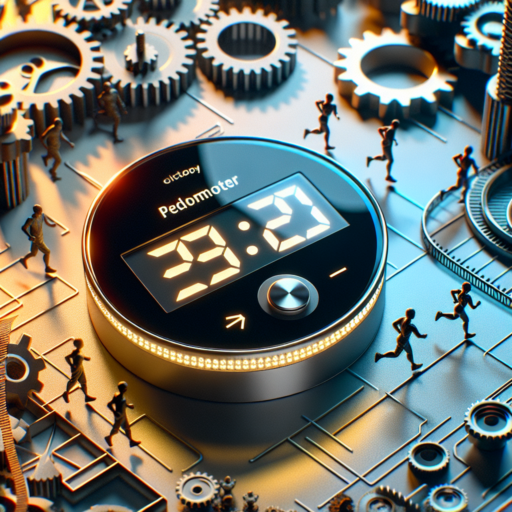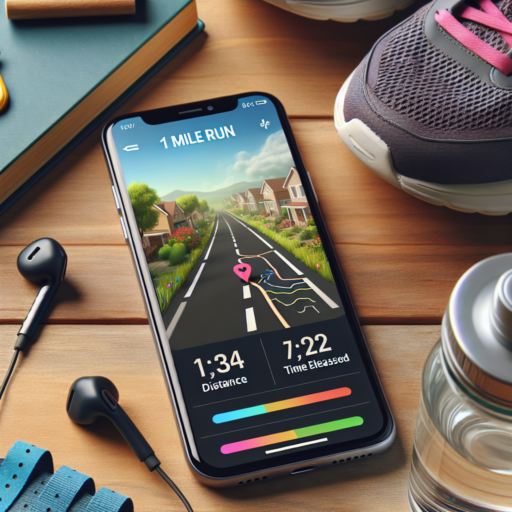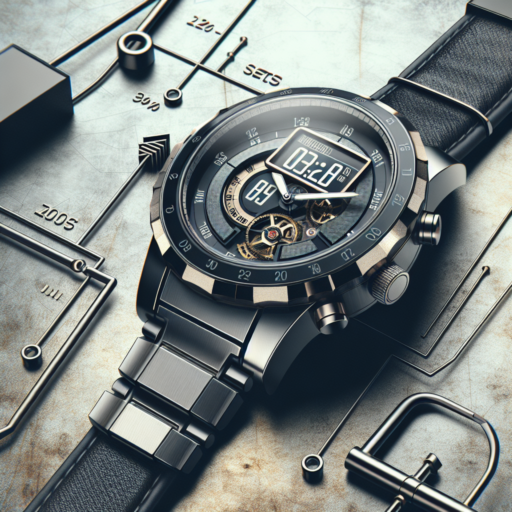What is a Pedometer Clock and How Does it Work?
A pedometer clock is a device specifically designed to count the number of steps a person takes. By tracking the number of steps, it can help users monitor their physical activity levels throughout the day. This tool is particularly useful for individuals aiming to increase their daily physical activity or monitor their fitness goals. Despite its name, modern pedometer clocks go beyond just counting steps; they can also track distance traveled, calories burned, and sometimes even your heart rate and sleep patterns.
The operation of a pedometer clock relies primarily on motion sensors. These sensors detect the body’s movement and then convert that motion into steps using a specific algorithm. The most common technology used in these devices is the 3-axis accelerometer, which is capable of accurately detecting movement in any direction. This sensor allows the pedometer clock to function regardless of its position – whether it’s placed in a pocket, worn on the wrist, or attached to a belt.
Pedometer clocks often come with a variety of features designed to support the user’s fitness journey. Many devices synchronize data with mobile apps or online platforms, enabling users to save and track their progress over time. This connectivity not only motivates users by visualizing their achievements but also allows for the setting of personalized goals and receiving insights based on the collected data.
The Top Features to Look for in a Pedometer Clock
Finding the perfect pedometer clock involves understanding the key features that can make all the difference in tracking your fitness goals efficiently. With technology advancing rapidly, picking a device that suits your lifestyle while encompassing essential functionalities is paramount.
Accuracy of Step Counting
At the core of a pedometer clock is its ability to accurately track steps. This capability is critical as it lays the foundation for monitoring your daily activity levels. The precision of step counting not only influences the reliability of the data but also ensures that you are motivated accurately towards your fitness objectives. Devices that feature advanced sensors and algorithms for detecting steps can provide a more accurate analysis of your physical activity.
Connectivity Features
In today’s interconnected world, having a pedometer clock that seamlessly syncs with other devices is vital. Look for features such as Bluetooth or Wi-Fi connectivity, which allow for easy integration with your smartphone, computer, or online fitness platforms. This connectivity enhances the user experience by enabling access to detailed reports, goal setting, and social sharing options. Moreover, it’s essential for real-time tracking and receiving updates on your progress.
Battery Life and Durability
Another critical factor to consider is the battery life and durability of the pedometer clock. A device that offers long-lasting battery life ensures uninterrupted fitness tracking, especially for those who engage in long-duration workouts or outdoor activities. Similarly, opting for a durable design that is water and sweat-resistant can significantly enhance the lifespan of your pedometer clock, making it an ideal companion for all kinds of physical endeavors.
No se han encontrado productos.
Comparing Pedometer Clocks: Analog vs. Digital
When exploring the world of pedometer clocks, the debate between analog and digital models often surfaces. This distinction significantly influences how users interact with their devices and track their physical activities. Understanding the key differences and features of each type can enhance your fitness journey and personal preferences in wearable technology.
Accuracy and Precision
Digital pedometer clocks are renowned for their precision in tracking steps and various metrics, including distance and calories burned, thanks to their advanced sensors and algorithms. They often sync with apps for a detailed analysis of your fitness progress. Analog pedometers, on the other hand, rely on mechanical movement, which, while reliable, might not offer the same level of detail or accuracy as their digital counterparts.
User Interface and Aesthetics
The user experience between analog and digital devices diverges considerably. Analog pedometers offer simplicity, with a focus on basic step counting, often appealing to users who appreciate a minimalist approach or the aesthetic of traditional watches. Digital pedometers, conversely, provide a versatile interface that displays a variety of information and even customizable screens, catering to those who favor functionality and personalization in their gadgets.
Setting Up Your Pedometer Clock for Accurate Step Counting
Accurate step counting is crucial for those keeping track of their physical activity, and it all begins with properly setting up your pedometer clock. By ensuring your device is correctly calibrated, you can trust the data about your daily movements, enhancing your motivation and ability to set realistic fitness goals. Let’s delve into how to optimally prepare your pedometer clock for the most accurate measurement of your steps.
Choosing the Correct Position for Your Pedometer
The position of your pedometer on your body significantly impacts its accuracy. For most devices, the ideal spot is attached to your waistband or belt, directly above your knee, to closely monitor the movement of your hips, which is a good indicator of step count. However, some modern pedometers are designed to be worn on the wrist or even carried in a pocket. Reading your device’s manual is key to understanding the best placement for accurate counting.
Calibrating Your Stride Length
Calibrating your stride length is vital for converting the sensor’s movements into accurate step counts. Most pedometers will ask for input on your height and weight, but for the best precision, manually measuring and inputting your stride length is recommended. This can be done by measuring the distance of several steps (at least 10 for reliability) on a track or a flat surface and then calculating the average. By entering this personalized data into your pedometer, you’re ensuring the device’s algorithm adjusts to your unique step pattern.
Remember, accurate step counting begins with these essential setup steps. By choosing the correct position for your pedometer and calibrating it with your specific stride length, you’re laying the foundation for reliable tracking of your physical activity. Regular checks and recalibrations will maintain the accuracy, keeping your fitness journey on track.
Integrating a Pedometer Clock into Your Daily Fitness Routine
Integrating a pedometer clock into your daily fitness routine can provide you with invaluable insights and motivation to enhance your overall health and activity levels. By simply strapping on this device, you gain the ability to track not only the number of steps you take but also the quality of those steps, all in real time. This data can become a cornerstone of your fitness journey, encouraging you to push your boundaries and set increasingly challenging goals for yourself.
The beauty of using a pedometer clock lies in its simplicity and effectiveness. Unlike other fitness gadgets that may require meticulous setup or constant input, a pedometer clock is designed to be user-friendly. Once it’s on, it passively collects data on your movement throughout the day. This hands-off approach means you can focus more on your daily activities without the hassle of stopping to record data. Moreover, seeing the numbers increase as you move more can serve as a powerful motivator to make those numbers go even higher.
To incorporate a pedometer clock into your routine effectively, consider setting daily step goals. Initially, aim for a modest number of steps and gradually increase this goal as your fitness improves. Many pedometer clocks also include features such as calorie tracking or distance measurement, offering a more comprehensive view of your physical activity. Taking advantage of these features can help you tailor your routine to achieve specific fitness outcomes, whether it’s weight loss, improved stamina, or greater cardiovascular health.
How to Choose the Best Pedometer Clock for Your Needs
Choosing the best pedometer clock might seem straightforward, but with the plethora of options out there, it’s essential to consider what features are most important to you. Whether you’re an avid runner, a daily walker, or someone interested in tracking your overall fitness, the right pedometer clock can make a significant difference in achieving your goals. First and foremost, accuracy is key. Look for devices known for their precise step counting to ensure you’re getting reliable feedback on your activity.
Compatibility is another critical factor to consider when selecting a pedometer clock. If you’re someone who loves to analyze your fitness data on other devices or apps, ensure the pedometer you choose can seamlessly sync with your smartphone or computer. This integration can greatly enhance your ability to track progress and set realistic goals. Compatibility extends to comfort and design as well; after all, a pedometer clock that is cumbersome or unsightly might end up sitting unused.
Battery life is often an overlooked aspect when choosing a pedometer clock. For those who are always on the move, a long-lasting battery is indispensable. Imagine the inconvenience of your device dying in the middle of a workout or a long run. Look for models with a battery life that can support your daily activities without constant recharging. Some advanced models even offer solar charging capabilities, ensuring you’re never left without your essential fitness tracking tool.
Understanding the Accuracy of Pedometer Clocks
Pedometer clocks have become an essential tool for people aiming to monitor their daily activity and fitness goals. However, understanding the accuracy of these devices is crucial for ensuring that the data they provide is reliable and useful for tracking progress. Many factors can influence the precision of pedometer clocks, including the device’s technology, the user’s body mechanics, and even the specific activity being measured.
Factors Influencing Accuracy
Several elements can affect how accurately a pedometer clock counts steps and measures distance. Device placement is one of the most significant factors, as carrying the pedometer in a bag, on your wrist, or clipped to your waist can yield different results. Furthermore, stride length variability among users also plays a crucial role. Different walking or running styles can lead to significant discrepancies in data, making it vital for devices to be calibrated for the individual user whenever possible.
Accuracy can also vary depending on the type of technology used in the pedometer clock. Devices that incorporate advanced sensors, such as accelerometers and gyroscopes, tend to provide more accurate readings than their simpler counterparts. However, the presence of sophisticated technology does not guarantee precision, as environmental factors and user behavior can still introduce errors.
In conclusion, while pedometer clocks offer valuable insights into physical activity, understanding their limitations and the factors that impact their accuracy is essential. By being aware of these aspects, users can more effectively use these devices to support their health and fitness journeys.




